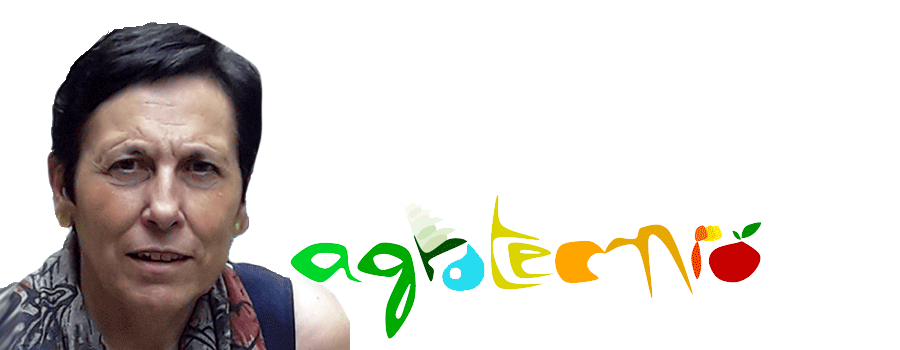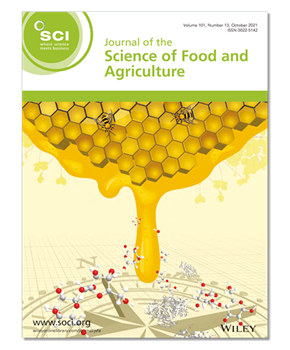Macabeo (Viura) grape response to climate variability in areas located at different elevations in the Rioja Designation of Origin
María Concepción Ramos, Fernando Martínez de Toda
To read and cite the full paper, please visit:
doi.org/10.1002/jsfa.11914
First published: 06 April 2022
WHAT'S IT ABOUT?
The effects of climate change concern all sectors and propagate across industries – for the wine industry, a key question is how grape varieties will respond to changing weather conditions. For regions where the wine sector is a main economic driver, such as Rioja in Spain, this information is crucial for mitigating the effects on productivity and quality losses.
To that end, María Concepción Ramos and Fernando Martínez de Toda have examined the effects of weather conditions on the white grape variety Macabeo in the Rioja region, between 2008-2020. There was high variability in temperature and rainfall across the years and among the locations studied, allowing the researchers to examine how the vine responded to these variations.
Grape flowering and harvesting dates were later in the coolest and wettest years, and at higher elevations. Acidity also varied depending on weather conditions, being lowest in the warmest and driest years. These observations are in line with other studies on white grape varieties and can help winegrowers to establish strategies ahead of warmer conditions.
From the editors of Journal of the Science of Food and Agriculture

Professor Andrew Waterhouse
Director, Robert Mondavi Institute
UC Davis, USA

Jun. Prof. Dr Sandra Schmöckel
Institute of Crop Science
University of Hohenheim, Germany
The Journal of the Science of Food and Agriculture covers a very broad area related to food production, including creating new cultivars by breeding, farming practices to optimise production, the processing of the raw products and the waste streams, testing and analysis of any step along the way, sensory analysis of the products, and of course the sustainability of any of these steps, including the means to deal with climate change.
We are very interested in efforts to mitigate and adapt to the effects of climate change, and this article by Ramos and de Toda is an excellent example of such efforts. They recognise that this is not a theoretical exercise in understanding the effect of climatic change, but that there is an urgent need to assist farmers in dealing with change that is occurring today in their vineyards.This paper is also notable for its coverage of many vintages and many different sites, where they observed greater change at higher elevation!
The journal is also very interested in studies that span from the field to the final edible product, and JSFA has the broad remit to not just accommodate but welcome such manuscripts from large interdisciplinary projects.
ABSTRACT
Background: This research aims to analyse the influence of climatic conditions on phenology and grape composition of Macabeo, which is one of the white varieties authorised in Rioja DOCa. Phenological dates for flowers separated and harvest, and grape composition were evaluated for the period 2008–2020 in five plots, located at different elevations (457–650 m a.s.l.). Grape parameters were related to temperature and water deficit recorded along the growing cycle.
Results: High variability in the weather conditions were recorded during the period analysed, with differences in the average growing season maximum temperature of up to 2.5°C among years and about 2°C among locations. Differences in the average growing season precipitation of about 200 mm among years and up to 60 mm among locations were recorded. That high variability could explain the differences in grape composition observed among years and among zones. The lowest sugar contents were recorded at the highest elevation, while acidity in that area was the highest. Although the relationship was only significant in one plot, probable volumetric alcoholic degree increased with increasing maximum temperature. Titratable acidity and malic acid decreased with increasing maximum temperature, the change being higher in the plots located at the highest elevation. Both titratable acidity and malic acid were significantly affected by water deficits recorded during the growing season, and in particular that recorded after flowering.
Conclusion: The results indicate that under warmer scenarios a decrease in titratable acidity and in malic acid might be expected for this variety, but with differences among zones located at different elevations.
MEET THE RESEARCHER

María Concepción Ramos
Department Environment and Soil Sciences, University of Lleida-Agrotecnio CERCA Center, Lleida, Spain
What were the main challenges you encountered in collecting data over a 13-year period?
Given the variability in climatic conditions in a given area from one year to the next, in order to evaluate the response of the vineyard to climatic conditions it is necessary to work with series as long as possible to include different situations.
In this case we were able to compile information on the Macabeo variety from different locations in the Rioja denomination of qualified origin (DOCa) regarding phenological stages and grape composition. The period analysed included years with a wide range of temperatures and rainfall distribution throughout the growing season.
This allowed us to evaluate the response of this variety under different climatic conditions, both in terms of phenology and grape composition. In addition, due to the extreme conditions recorded in some years, with temperature differences of more than 2°C with respect to the average and with years with very dry and very wet periods, the information has allowed us to infer potential changes under climate change scenarios.
Why did you select Rioja DOCa as your region of interest?
The Rioja appellation of origin (Rioja DOCa) is a wine-growing region with a long tradition in Spain and its wines are known throughout the world. The area is dominated by red varieties, which cover about 90% of the area occupied by vineyards, in particular Tempranillo, Grenache and Graciano, but some white varieties are also grown. Among them, Macabeo, locally called Viura, is grown in the area to produce both young and aged wines and sparkling wines.
In recent years we had evaluated the effect of climate and water availability on the main red varieties, and we had assessed the potentiality of each of them in locations at different altitudes within the DO. To complete the analysis, and under the hypothesis that varieties with different phenological cycles may respond differently to the different climatic conditions, we decided to include in the overall analysis some white varieties.
We focused on the white variety Macabeo, a variety with origin in Spain, which covered about 6% of the area, but is the second-most cultivated white grape variety in Spain and has increased its cultivated area in recent decades. Thus, the results could be of interest not only to winegrowers in the DOCa Rioja but also to those in other wine-growing regions.
What are the key implications of your research findings for winegrowers of Macabeo grapes?
The results point out the possibilities that the cultivation of a given variety could have at different elevations as well the effect of increasing temperatures on grape composition. Late phenological dates were observed in the coolest and wettest years and in the areas located at the highest elevation. This is important when an advance in phenology is being observed during recent decades, which could be even higher under warmer situations.
Regarding grape composition, some conclusions could be extracted in relation to sugar and acidity. At higher elevations, Macabeo grapes do not currently attain high sugar contents. With warming conditions, later phenologies may increase this value in higher regions.
The results also highlighted the implications that cultivation at different elevations and under different climatic conditions could have on acidity. Acidity is affected by temperatures and water availability after flowering, and in particular during the ripening. Acidity tends to decrease when the maximum temperature increases and to increase when water deficits decrease, being necessary to combine both variables to extract information for potential changes under climate change.
The information could be of interest to winegrowers in the area for new vineyard plantations and in order to establish strategies ahead of warmer scenarios.
How do you intend to expand upon this research, going forward?
Within the Rioja DOCa, the most important varieties have been analysed in this respect. The research can be expanded, however, in the same viticultural area to cultivars that are minority at present, in order to evaluate their suitability under future conditions.
On the other hand, we project to analyse the vine response in other viticultural areas in Spain and other cultivars. Each area has its own cultivars, which have been usually cultivated in each area for decades or even centuries.
We try to evaluate firstly how the most representative varieties are affected by the weather conditions, and what could be the ones that present high susceptibility to suffer negative impacts or the ones that may be more resilient in front of warmer conditions and with less available water. The response of varieties in the new selected areas are evaluated and compared with the same cultivars already analysed in other areas, which may record similar or different climatic conditions. In addition, new information appears from the cultivars more characteristics for the new studied regions. At present the suitability of response of Macabeo is being analysed in other regions of Spain and compared with the response of other white cultivars in the area.
The following step should be to design strategies to mitigate the impact in those areas where we have observed or predicted higher susceptibility of suffering negative impacts due to climate conditions. Given the projected advance in grape ripening, which will take place under warmer conditions, one of the best ways to mitigate the effects of climate change may be establishing measurements to delay phenological timing. Among the various viticultural techniques to delay ripening, the canopy management techniques are especially interesting because they can be performed on already installed vineyards without need to establish new vineyards, like relocation of the vineyards to cooler areas or the use of new plant material better adapted to future conditions.

